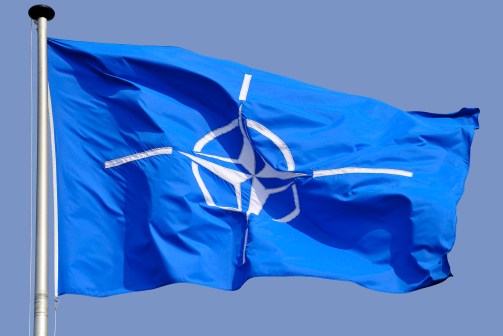Pentagon exploring new Swedish military technology amid talks of NATO expansion

The Department of Defense is looking at Swedish military technology to see if it meets U.S. military needs at a time when Sweden may be poised to join the NATO alliance.
During their first international trip in two years, officials from the Pentagon’s Foreign Comparative Testing (FCT) program — which hunts for cutting-edge, non-U.S.-made products with a high technology readiness level to deploy for Defense Department applications — recently visited the Scandinavian nation. That trip also unfolded as Sweden considers joining NATO — and potentially bringing its impressive technology portfolio to the military alliance.
Sweden has been a long-time defense partner with the United States, but has remained outside the NATO security pact. However, Russia’s ongoing invasion of Ukraine has shifted public opinion in Sweden and prompted a reconsideration of whether the nation should join NATO.
“As everybody says, it’s a political decision and no one has made up their mind yet. I think Sweden, as a small- or mid-sized country, has quite short connections between the military problems and the technology. And we are known to be one of the world’s most innovative countries. We have some top-notch technology,” Swedish Armed Forces Chief Scientist, Col. Rickard Stridh told FedScoop last week at the House of Sweden, which is located in Washington and houses the Swedish Embassy.
Stridh was among many officials who spoke at the 18th U.S.-Sweden Defense Industry Conference, which was hosted by the National Defense Industrial Association (NDIA).
Bryant Streett, director of mission prototypes in the Pentagon’s office of the undersecretary of defense for research and engineering, said that Sweden has been one of the FCT program’s best sources of innovative technologies. He noted that the Swedish aerospace and defense company Saab AB “is probably the company that’s been the most successful with FCT over the last 40 years” in terms of the number of funded projects.
“I think we’ve funded 80-plus FCT projects from Sweden over the years. Over $200 million invested by [the office of the secretary of defense] for those projects, and maybe 30-plus of those have led to a procurement or to fielding. And that’s with a budget, a procurement acquisition, of like $1.5 billion. So, Sweden has done very well over the years because they’ve had really good technologies that have been better in many cases than we have here,” Streett said.
Mandated by Congress with yearly funding, FCT is a program through which DOD can partner with allies to “save money on the development of technologies and systems where the foreign company has already spent a considerable amount of money” to develop the system, according to Streett.
Officials are looking for prototypes to test and potentially acquire that can provide capabilities a U.S. military service may not yet have — or alternatives to existing options that are cheaper or better.
While hypersonic missiles, for example, are beyond the scope of typical FCT projects, Streett said the team is looking for something along the lines of “a chip that goes into something, it could be a new piece of handling equipment for logistics, it could be a device that monitors chemical agents or radiation.”
He and his colleagues saw some of those technologies on their trip to Sweden earlier this month.
The FCT officials spent a day with Saab to discuss electronic warfare and maritime technologies, and and also met with 20 other companies.
“Just to give you an idea, there were two companies that make high-strength steel, a third that uses additive manufacturing for 3D printing high-strength steel for really tough applications. [There was] a handheld chemical detector … radiation detectors, and an emergency oxygen system that allowed a re-breathing capability so you don’t have to take a giant canister of oxygen wherever you go,” Streett said.
He noted that the group also visited Finland, Norway and Denmark on their trip to engage those nations about technology.
Finland is also considering joining NATO in the wake of Russia’s invasion of Ukraine.




